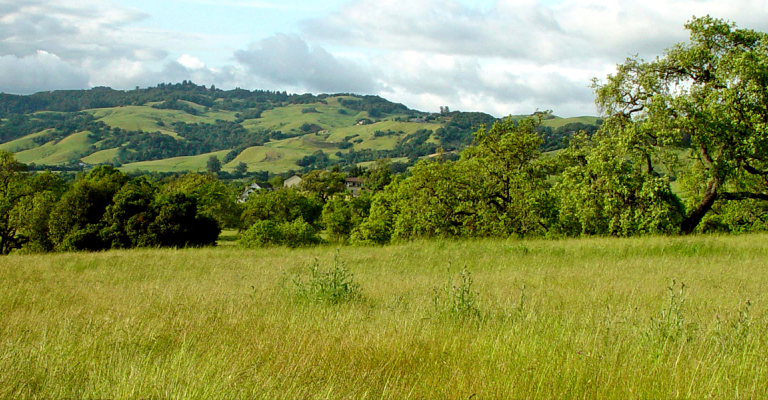Dave's Memories
David A. Fredrickson
(1927 – 2012)
Robert Orlins of Woodland, shared this memory:
Dave Fredrickson: Late 1950s to Early 1960s
I’ve recently been asked about when I met Dave and Vera Mae and if I knew any of the circumstances that led to Dave's return to archaeology. The story starts when I ended up at the San Francisco Greyhound Station in November 1958, called a friend from New York old time music circles and ended up staying a week or so with San Francisco writer, Mike Gold, and his sons Carl and Nick Granich, both fine musicians. Their home was old time music central much as Fredrickson's Parker St. home became. When they weren’t working longshore, their house had a constant flow of great musicians.
I met Dave and Vera Mae through the Granich’s at music parties in San Francisco that winter. At the time the Fredrickson’s lived in North Berkeley, I think on Allston Way. Not too much later they moved to a house on Bonita, and I had an apartment not far on Parker and so it was as this time that Melva and I saw a lot of Dave and Vera Mae. Dave was driving a cab in the East Bay and he and Vera Mae worked as artist models, and were very active as officers in the Models Guild where they worked vigorously to improve working conditions for all Guild members. During this period, the only archaeology I remember Dave participating in was helping George Coles and his students and volunteers salvage what they could of the sites out on Brooks Island that were being subject to vandalism and eroding into the Bay.
Sometime probably early in 1960, one of Dave’s old colleague’s from U.C. Berkeley Survey days, Fritz Riddell, called Dave and asked him to run an excavation project 2 miles south of Lower Lake. At the time, Fritz was the sole full-time State Archaeologist, who had been hired by State Water Resources for the Oroville Project. Ultimately, Fritz also had to take on the role of State Archaeologist for the archaeological salvage programs of the Division of State Highways, now CALTRANS and the Division of Beaches and Parks, now Department of Parks & Recreation.
State Highways was realigning the highway between Middletown and Lower Lake and they were going to go through a midden site (LAK-261) that Fritz thought was an important site. Dave turned Fritz down. He had been away from archaeology for 10 years, had a family to support, responsibility to the Models Guild, and there was the music—obviously his life had changed since student days and it didn't include an academic discipline. But, Fritz was persistent, he talked to Dave many times, he talked about the bulldozers waiting to go through the site, and Dave kept turning him down; however, I think sometime during that summer, Dave told Fritz he would consider it if he could find enough people to make up a crew. The two criteria he used to assess the friends and friends of friends he hired were, (1) They had to have a strong work ethic to earn their $1.50/per hour and, (2) They had to be easily trainable. They also had to be able to work, cook, sleep; live in a rough field camp.
Dave pulled together a crew of 6 to 8 people, we packed supplies and equipment, and off we went to this site on the Houx property in Excelsior Valley, Lake County. As we started to survey the site, an irate rancher with shotgun in hand, asked Dave what we were doing there; then told him that State Highways did not have the right-of-way yet and literally ran us off.
We returned in April 1961 with a somewhat different crew, consisting of myself, longshoreman Nick Granich, commercial fisherman, Phil Syvanen, Marianne (?), who I think had been an anthropology major, Pete Williams, a Mohawk high steel worker, Fred Bennet, mechanic, Bill Lamm, custom jeweler from the Sausalito houseboat colony, Jay (?), a student drop-out, and Charles Yerby and Miriam Stafford, both school teachers. There were also many volunteers, notably George Coles, who was always accompanied by a group of students from his classes at Contra Costa Community College, two of whom I know went on in archaeology: Dean Gaumer and Tom Wheeler, a CALTRANS archaeologist.
As a result of this project, Dave became hooked on archaeology (as did I), and through Fritz took on the PG&E project at Bodega Head, and the highways projects at the inland Contra Costa Sites at Walnut Creek, Alamo, and Danville. These were during the years 1961 to 1963.
As most of you know, that site in Lake County became the subject Dave's dissertation at UC Davis and led to his chronological/developmental framework for California prehistory.
As a footnote, sometime in the early 1970s, I needed to put a crew together for a State Parks project at San Mateo Coast State Beaches. I asked Dave if he knew of anyone available and he mentioned his new neighbors on Parker St., a couple who had just moved in, who had been doing archaeology in the UK, and badly needed work. That was how I first met Adrian Ellis and Mary Praetzel (our Session Organizers [SCA 2013]), now traveling as the Praetzellis's, and it was Adrian’s first archaeology work in the New World.
I will leave you with this thought: How different would California archaeology be if Fritz had not been as persistent as he?
Robert Orlins, Woodland
March 8, 2013
Memories: 1 - 2 - 3 - 4 - 5 - 6 - 7 - 8 - 9 - 10 - 11 - 12 - 13 - 14


